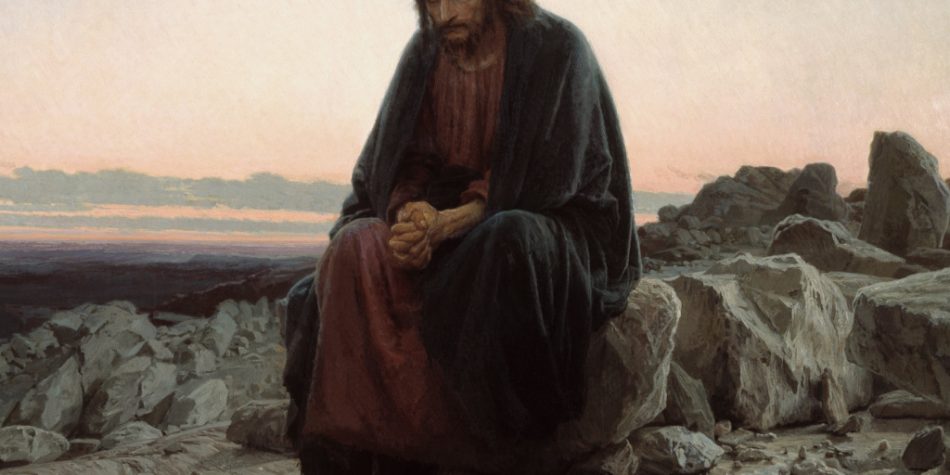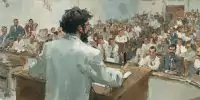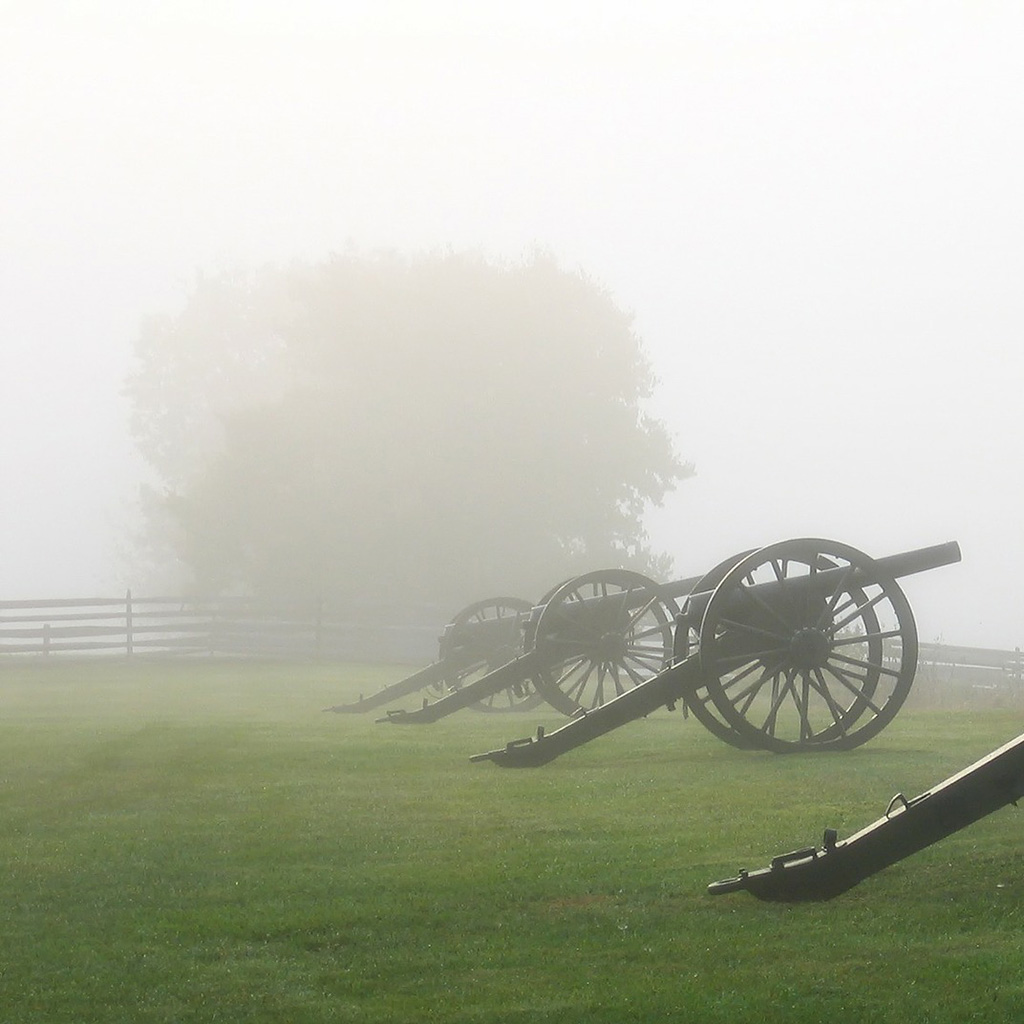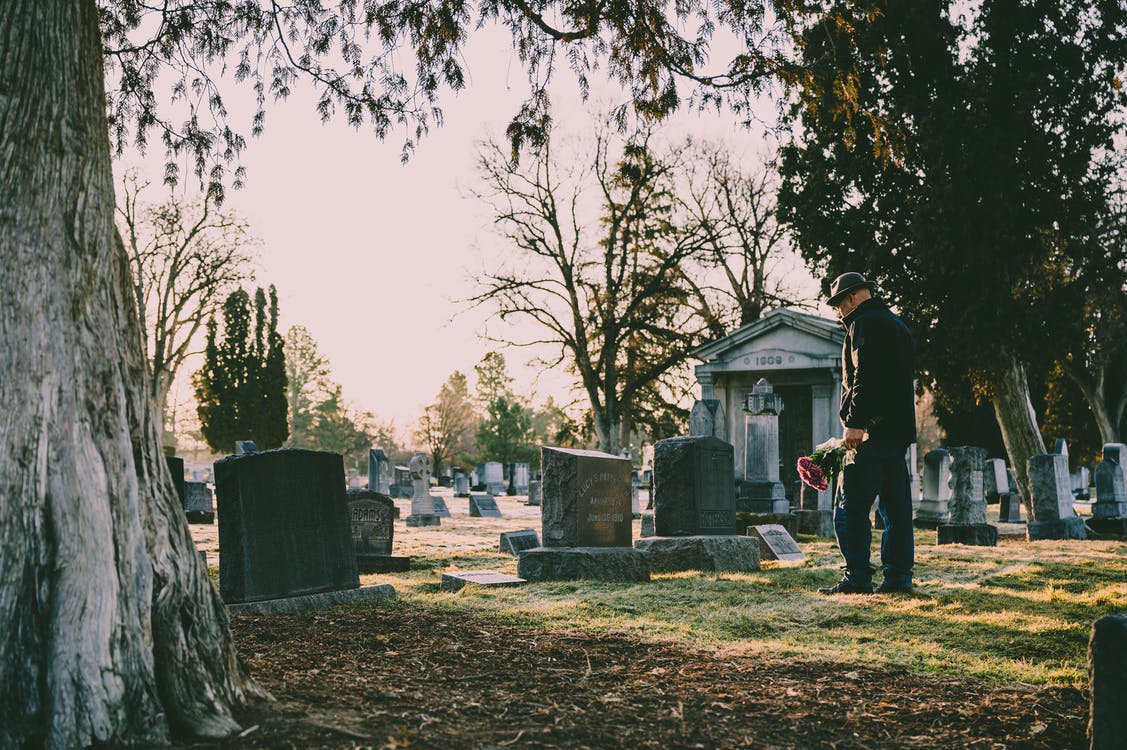“This article was originally prepared for the National Security in an Era of Global Upheaval: Perspectives from Latter-day Saint Professionals Conference held March 3-4, 2023 in Provo, Utah. This paper will appear in an edited conference proceedings published by Brigham Young University Press. It is published here with permission from the editors of the volume.”
The ongoing (as of summer 2023) war in Ukraine has been framed variously as a challenge to Europe, to NATO, to democracy, to “the West,” to sovereignty, to multilateralism, to American commitments and resolve, to international peace and security, and to global order—not to mention the actual physical threat to millions of Ukrainian civilians and soldiers and hundreds of thousands of conscripted Russians. Far more than has been commonly appreciated, the war should also be understood as a significant challenge for Christians. I am not referring here to the conflict between the Russian and Ukrainian Orthodox Churches, although that is substantial and was at least a stated factor contributing to Vladimir Putin’s justification for the invasion. Rather, the current war in Ukraine threatens to lay bare once again the apparent fecklessness of a Christian peace ethic in a “real world” characterized by brute force and naked aggression.1
Advocates of Christian nonviolence are often met with some variation of the question, “What about Hitler?”—now updated to “What about Putin?”2 In other words, how do all your lovely principles of peace and nonviolence stack up against an autocratic leader intent on violent conquest with apparently no concern for the resultant loss of life, physical and environmental destruction, and the host of other mass injustices incurred? Does Jesus have anything to say to Putin (or, for that matter, Volodymyr Zelensky and Joe Biden)? Or do we sideline Jesus, however temporarily and regretfully, and instead lift up Captain Moroni, Joan of Arc, Winston Churchill, and a host of Christian warriors throughout history as our true exemplars for this moment? There is no such thing as holy violence.
It has frankly been easy to be a proponent of nonviolence in my lifetime. Not culturally easy, particularly in the context of a Latter-day Saint culture in the Intermountain West that loves its guns and valorizes the stripling warriors over their pacifist parents. But the vast majority of armed conflicts around the world in recent decades have been nasty intrastate affairs, and in most of those cases, the motivations and tactics of the various antagonists have been dubious at best. At least since Vietnam, American military interventions in various parts of the world have typically failed to meet the widely agreed-upon criteria of a just war. Add to that the incredibly destructive power of modern weaponry, and war becomes increasingly morally untenable. Martin Luther King Jr. captured this view back in 1960:
While I was convinced during my student days of the power of nonviolence in group conflicts within nations, I was not yet convinced of its efficacy in conflicts between nations. I felt that while war could never be a positive or absolute good, it could serve as a negative good in the sense of preventing the spread and growth of an evil force. War, I felt, horrible as it is, might be preferable to surrender to a totalitarian system. But more and more, I have come to the conclusion that the potential destructiveness of modern weapons of war totally rules out the possibility of war ever serving again as a negative good.6
In more recent years, an international group of Roman Catholic leaders, academics, and practitioners met in 2016 to reconsider their church’s longstanding commitment to just war theory as its principal ethical lens. Lamenting the ways that just war theory has not only “been used to endorse rather than prevent or limit war” but also “undermines the moral imperative to develop tools and capacities for nonviolent transformation of conflict,” the group called upon the Catholic Church to renounce its longtime commitment to just war and embrace instead a more consistent position of strict nonviolence. Even the “responsibility to protect” (or “R2P”) doctrine—developed by the international community in the early 2000s in response to their own failure to prevent or effectively intervene in the mass atrocities in Rwanda and the former Yugoslavia during the previous decade—authorizes limited peacekeeping efforts that share more in common with policing than with an extension of nation-states’ authority to go to war. In short, while nonviolence has always been a minority position both among Latter-day Saints and within American culture more broadly, global events in the late twentieth and early twenty-first centuries made their own case that in today’s world, there is no such thing as an authentically just, let alone supposedly “good,” war.
Cue Russia’s invasion of Ukraine in March 2022, which confronted the world with an old-fashioned case of armed conflict across national borders with a clear aggressor using brute military force to seize territory or subdue a weaker neighbor. While Ukrainians scrambled to defend their country and flee to safety, intellectuals far removed from the actual conflict zone could coolly consider whether the various sides in this new conflict met the just war criteria developed over many centuries by Christian theologians such as Augustine, Thomas Aquinas, and Francisco de Vitoria. As a reminder, the jus ad bellum criteria are commonly listed and described as follows:
- Just cause – There must be a just cause, such as safeguarding innocent life, preserving conditions for human existence, protecting human rights, or responding to egregious breaches of international law or foreign violence.
- Legitimate authority – War can only be declared by a governmental authority widely deemed to be legitimate and representative.
- Last resort – All realistic means of resolving the conflict using non-military efforts must be exhausted first.
- Right intention – The honest purpose of the war must be to restore peace and justice, not for territorial conquest, political or economic domination, or other selfish reasons.
- Probability of success – The odds of success should compare favorably to the likely cost in human life.
- Proportionality – The good to be achieved by the war must clearly outweigh the inevitable damage and costs that come about in the prosecution of the war.
Any objective application of these criteria reveals Russia’s invasion to fail on every account other than legitimate authority. Speaking in terms of Russia’s involvement, this is a textbook example of an unjust war. Violence can, at best, be “justified.”
The Ukrainians have employed a wide variety of methods to resist the Russian onslaught. Particularly in the opening months of the conflict, local populations engaged in hundreds of seemingly spontaneous acts of nonviolent civil resistance, including public protest, noncooperation, and direct intervention. As peace researcher Felip Daza documented:
Even in traditionally pro-Russian Ukrainian regions such as Kherson, local residents blocked a Russian convoy and forced it to turn around. Citizens in Odessa built a wall of sandbags against a potential invasion through their beach. Residents in Lviv built anti-tank obstacles against the Russian invasion. The community of Podolianochka implemented a communication system to identify saboteurs in their neighborhood. When Russian forces kidnapped the mayor of Skadovsk, the public protested even though the Russian military threw tear gas grenades and fired weapons to disperse protesters. The mayor was released immediately after the protests.
“Ordinary” citizens have used nonviolent methods to promote Ukrainian patriotism, maintain social cohesion, create systems for the evacuation of noncombatants, provide counseling and psychosocial help for women and children and other groups affected by the war, and monitor and document war crimes committed by Russian troops.7
In the early weeks of the conflict, I cheered the stories of local citizens quietly removing or changing road signs to confuse invading convoys and Ukrainian grandmothers boldly shaming Russian soldiers. Nevertheless, I knew even at the time that these nonviolent tactics, however creative and inspiring, simply would not deter, let alone defeat, an autocrat like Putin, who seems dead-set on achieving his objectives regardless of the cost—to Ukrainians or even his own troops. It would be too cynical to say that the Ukrainians’ nonviolence has been ineffective or meaningless. Armed conflict is largely psychological, and both early and ongoing nonviolent resistance efforts have helped break the resolve and erode the myths upon which the Russian invasion was founded. The steadfastness of the Ukrainian leadership and people has perhaps been the nation’s greatest strength in countering Russia’s much larger and supposedly superior military force. But Ukraine has held out this long and stands a chance of not only surviving but possibly even reverting to something like the status quo ante bellum because grassroots nonviolence, strong political will, and international diplomacy have been effectively supplemented by the lethal use of guns, artillery, drones, tanks, and anti-aircraft and anti-missile defenses (supported by billions of dollars of military aid provided by Western governments). It is difficult to conceive of how Ukraine would have remained an independent nation had it pursued purely nonviolent means of resistance.
This places proponents of nonviolence in an awkward position. Can I say that it would have been better for Ukrainians not to take up arms in self-defense and simply to submit to Russian aggression? I can point to examples that support both the moral and strategic superiority of nonviolence in the face of overwhelming force. By courageously and nonviolently going out to meet the invading Lamanite army, the Anti-Nephi-Lehies did, in fact, protect their families. Even the tragic loss of over one thousand lives pales in comparison to the death tolls reported in typical Book of Mormon battles. An even more relevant example is the largely nonviolent Danish resistance to Nazi occupation during the Second World War. Unable to prevent the Germans from invading their country, Danes refused to simply capitulate and give the German occupiers what they wanted, which was a pliable population cowed into submissively providing food, manufactured goods, and materiel for the Nazi war machine:
Through symbolic and cultural protests, [Danes] asserted their right to govern their own lives, and that strengthened public morale—which inspired bolder resistance. Through strikes, defiance at work sites, and damage to physical property, nonviolent resisters attacked the economic interests of the invaders. In Denmark, through underground publishing, an alternate network of communication was established to counter the lies of the occupiers’ propaganda. By involving so many civilians in strikes, demonstrations, and other forms of opposition, Danish resisters forced the Germans to stop violent reprisals and suspend curfews. They denied the Nazis their prime goal, on which other objectives depended: making the fact of occupation normal.8
Through strategic noncooperation and nonviolent resistance, Denmark emerged from the war as one of the least damaged countries in Europe and, in 1945, was in the enviable position to export food to the rest of the continent. Through concerted action, Danes even saved most of their Jewish fellow citizens, evacuating over seven thousand to Sweden and losing less than five hundred during Nazi raids in October 1943.9
Both scripture and history, therefore, attest that self-defense can effectively take nonviolent forms. Social scientific research agrees. Erica Chenoweth and Maria Stephan have convincingly demonstrated that civil resistance campaigns around the world tended to be far more successful in the twentieth century when they pursued chiefly nonviolent strategies.10 Presumably, therefore, the Ukrainians might have followed a similar path as the Danes. But while the Danish noncooperation and nonviolent resistance movement was remarkably successful, we must admit that the country’s liberation was ultimately accomplished by Allied military might. Similarly, once they removed to the land of Jershon, the ongoing survival of the Anti-Nephi-Lehies became dependent on Nephite military protection, supported by the martial participation of some of their own sons. Yes, nonviolence can be strategically effective as well as morally admirable, but we also need to be honest about the ways it has often been deployed in at least tacit partnership with military ventures. A Christian peace ethic calls all sides to repentance.
It is noteworthy that the declaration states that (presumably violent) self-defense is “justified.” This is a common enough term in these types of discussions that it could easily be ignored. I propose, however, that the term is an intentional echo of the language used by the Lord in an August 1833 revelation to Joseph Smith just as mob violence against the Saints was escalating in western Missouri.11 This is the revelation that famously commands the Saints to “renounce war and proclaim peace,” putting the dictate in covenantal terms. It goes on to outline a divine ethic of how to respond to unprovoked violence. The revelation speaks first to individuals and families and secondly to nations. God expects his followers to exercise patience and respond nonviolently in the face of aggression. If they do so, choosing to “revile not . . . neither seek revenge” to the first provocation, God will reward them. If the attacks continue, the divine rewards for nonviolently bearing it with patience increase exponentially. The revelation is clearly informed by the higher law delivered by Jesus in the Sermon on the Mount, but it also allows for human frailty by providing a lesser alternative to nonviolent love and forbearance. In the face of repeated hostility, the Lord says the oft-injured party is now “justified” or excused if they respond in kind. The revelation’s clearly stated preference is for individuals to “spare” their enemies, but they are “justified” in their choice to use self-defensive violence in the face of a recalcitrant and insistent aggressor. Similar principles apply to communities and nations, though at a different scale. When an assault is imminent, the nation should “first lift a standard of peace” to their aggressor—not once, but three times. If those entreaties are rejected, then the beleaguered victims can bring their testimonies of suffering to the Lord, who will “justify them in going out to battle.” Significantly, this “justification before me” is not a blank check for unrestrained violence, even in self-defense. It applies only as long as the aggressors remain unrepentant. As soon as they cease the attack and seek mercy, the aggrieved party is commanded to extend forgiveness “as oft as thine enemy repenteth.” This is a stringent ethic that goes well beyond what is traditionally permitted by just war theory. Furthermore, in establishing remarkably similar standards at both the micro and macro level, the revelation implicitly rejects the argument advanced by Augustine and Reinhold Niebuhr (among others) that nation-states operate under a substantially different ethical paradigm than individual Christians.
It is worth lingering on the term “justified,” used so consistently by both the 1833 revelation and the 1835 declaration on government. In Christian theology stretching back to the apostle Paul, justification means to excuse or make righteous or just in the sight of God. If an attitude or action is already just, righteous, or holy—for instance, pure love for others—it does not need to be justified. Only actions or attitudes that fall short of a celestial standard (that is to say, most human actions and attitudes) require justification. Therefore, any time the Lord says that he will justify something, we should recognize that thing as being sinful or falling short of the glory of God. Sin itself is not justified, but through God’s grace and the transformative power of Christ’s atonement, the sinner can be made right.12 The assurance of being made right by God lies at the very heart of Christianity. At the same time, the promise of justification constitutes neither a trivialization of nor an invitation to sin. Paul, the great exponent of the doctrine of justification, made this clear: “Shall we continue in sin, that grace may abound? God forbid” (Romans 6:1- 2).
On this point, Latter-day Saint Christianity departs from the older Christian tradition. As outlined previously, Catholic just war theory offers several criteria that, if fulfilled, render a war “just” or righteous. On the other hand, with the August 1833 revelation and 1835 declaration on government as the most authoritative scriptural sources, Latter-day Saint theology says that even self-defensive violence can only be “justified” if it meets certain standards (which are stricter than the just war criteria); it is never rendered “just.” If we understand sin to be essentially a matter of any act that alienates a person from God or other human beings—thus undermining the two great commandments—then the taking of a human life, which by definition is alienation in the extreme, is always sinful. Nowhere in Restoration scripture is violence described (let alone theologized) as uplifting, ennobling, sanctifying, or exalting. There is no such thing as holy violence or holy war in Latter-day Saint theology. Even in its most understandable and defensible forms, violence can, at best, be “justified.”
This, I argue, is the substance of a Latter-day Saint Christian peace witness—even amid a clearly justified self-defensive war such as the one being fought by Ukraine. Violence is sin. War multiplies that sin exponentially such that it is the very thing that causes God to weep. (See Moses 7:28, 33.) The only response in the face of violence that requires no justification, as per the August 1833 revelation, is to “bear it patiently and revile not . . . neither seek revenge.” This is a hard teaching, but consistent with the other “hard sayings” of Jesus: “Love your enemies, bless them that curse you, do good to them that hate you, and pray for them which despitefully use you, and persecute you” (Matthew 5:44; see also 3 Nephi 12:44). The same principles were reiterated by Paul in his letter to the early Christians in Rome: “Bless them which persecute you. . . . Recompense to no man evil for evil. . . . If it be possible, as much as lieth in you, live peaceably with all men. Dearly beloved, avenge not yourselves. . . . Be not overcome of evil, but overcome evil with good” (Romans 12:14-21).
A war that truly meets the standards of justification laid out in scripture, therefore, presents the Christian with a special kind of challenge, and I daresay temptation. Why? Because it may lead us to reason that a) because this war is justified, b) it is just, and therefore c) war can, in fact, be righteous. This is bad logic: b) and c) do not necessarily follow from a), especially considering the theology of justification laid out above. Nevertheless, the logic can seem right because it feels right to support those who wage war in self-defense. Yet it is precisely because their violence requires (and may receive) justification that we must hold on to the fact that it is at first and always sinful. Even self-defensive violence is a corruption of the love and affection that a fatherly God desires—and therefore commands—His children to cultivate. A justified war not only tempts us to ignore its original sin but also to overlook the fact that, in the course of battle, justified actors commit inexcusable acts. Let me be clear: there is no moral equivalency between atrocities committed to date by Russian and Ukrainian military forces, respectively; one can only hope that after the war’s end, Russian politicians, military commanders, and soldiers will be held accountable for their innumerable war crimes. Despite this obvious ethical imbalance, the fact is that the war has—as it always does and will—dragged Ukrainians down with it. Reliable reports suggest, for instance, that some Ukrainian forces have tortured Russian prisoners of war, that some Ukrainian troops summarily executed Russian officers, that some Ukrainian military tactics may have put civilians in danger, and that Ukrainian drones attacked Russian residential buildings with no military value. As the war drags on, no doubt additional atrocities and war crimes will accumulate on both sides. “The line between defensive violence and aggressive or retaliatory violence is a fine line indeed,” Martin Luther King Jr. observed.13
Furthermore, war perverts the notion that God is on our side by insinuating instead that God is only on my side. Both Russians and Ukrainians have promoted the blasphemy that God specially endorses their killing. Patriarch Kiril of the Russian Orthodox Church has blessed the invasion as “a struggle that has not a physical, but a metaphysical significance,” while a professionally produced video released by Ukraine’s top military commander showed troops praying that God would bless them “to destroy my enemies” and allow them to wreak “sacred revenge” on Russian troops. War is a totalizing logic that consumes even Christian theology, leaving only neutral parties such as Pope Francis to preach the truth: “Once upon a time, there was also talk in our churches of holy war or just war. Today we cannot speak like this. The Christian conscience has developed on the importance of peace.” Jesus’s call to nonviolence was never meant to be a moral bludgeon.
It is not just those actively prosecuting the war who are called to repentance. The war in Ukraine has led me to be more contrite. It has been too easy for me over the years to be smug, self-assured, arrogant, and judgmental in the supposed righteousness of my near-absolute nonviolent position. I have had to come to terms with what the revelations that I believe to be the word of God actually say—that there are, in fact, instances where self-defensive violence may be justified, if not preferred. From my supremely luxuriant position of safety and security, I have had to become humbler and more empathetic to those—past, present, and future—who commit justified violence on others’ behalf. Jesus’s call to nonviolence was never meant to be a moral bludgeon. It is, rather, an invitation into the life of a God who has “said, and also given commandment, that they should love one another.”
References:
1. My thanks to Matthew Bowman, Amanda Hendrix-Komoto, David Howlett, Melissa Inouye, Jeannie Johnson, Laurie Maffly-Kipp, David Pulsipher, and Jana Riess for their constructive comments on an earlier draft of this essay. Of course, Christians are not the only people with a peace ethic, but my focus in this essay is on reading this war between two putatively Christian nations through a Christian peace ethic, and more specifically a Latter-day Saint one.
2. See Robert W. Brimlow, What about Hitler? Wrestling with Jesus’s Call to Nonviolence in an Evil World (Grand Rapids, MI: Brazos Press, 2006).
3. Patrick Q. Mason and J. David Pulsipher, Proclaim Peace: The Restoration’s Answer to an Age of Conflict (Provo, UT: Neal A. Maxwell Institute for Religious Scholarship, and Salt Lake City: Deseret Book, 2021).
4. Tertullian, Idolatry 19, p. 73, quoted in Lisa Sowle Cahill, Blessed Are the Peacemakers: Pacifism, Just War, and Peacebuilding (Minneapolis: Fortress Press, 2019), 77.
5. Russell M. Nelson, “The Power of Spiritual Momentum,” April 2022 General Conference
6. Martin Luther King Jr., “Pilgrimage to Nonviolence,” in I Have a Dream: Writings and Speeches that Changed the World, ed. James Melvin Washington (San Francisco: HarperSanFrancisco, 1992), 60.
7. Felip Daza, “Mapping Civil Resistance in Ukraine,” Peace Policy: Solutions to Violent Conflict, no. 54 (May 2023). See also Felip Daza, Ukrainian Nonviolent Civil Resistance in the Face of War: Analysis of Trends, Impacts and Challenges of Nonviolent Action in Ukraine between February and June 2022 (Barcelona: ICIP and Novact, 2022).
8. Peter Ackerman and Jack DuVall, A Force More Powerful: A Century of Nonviolent Conflict (New York: Palgrave, 2000), 238.
9. Ibid., 224, 231.
10. See Erica Chenoweth and Maria J. Stephan, Why Civil Resistance Works: The Strategic Logic of Nonviolent Conflict (New York: Columbia University Press, 2011). Note that most of Chenoweth and Stephan’s case studies involve civil resistance in the context of intrastate conflicts, not foreign military invasion.
11. This argument follows the analysis in Proclaim Peace, chap. 6.
12. See Kenneth Appold, “Justification,” in The Cambridge Dictionary of Christian Theology, ed. Ian A. McFarland et al. (New York: Cambridge University Press, 2011), 257-59.
13. Martin Luther King Jr., “Nonviolence: The Only Road to Freedom,” in I Have a Dream, 130.

















